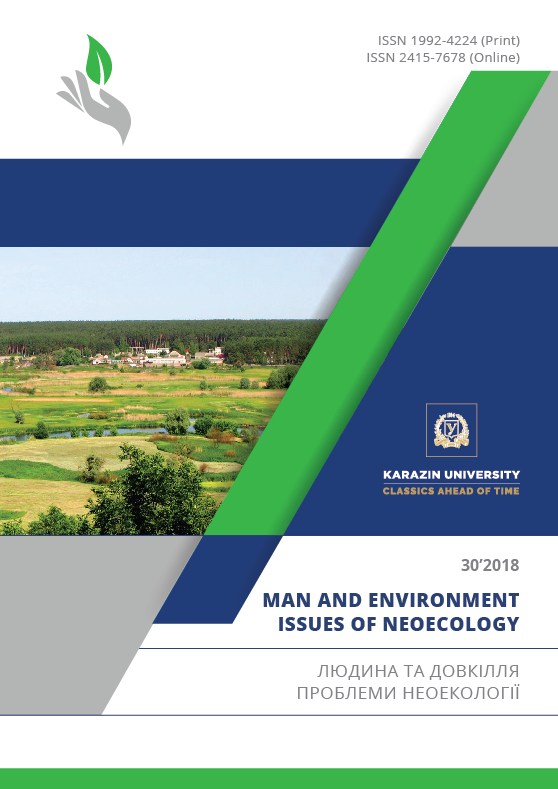Вплив на екологічне здоров’я спортсменів холодного атмосферного повітря
Анотація
За результатами досліджень визначені основні шляхи вирішення проблеми негативного впливу холодного атмосферного повітря на екологічне здоров’я спортсменів: нормування порядку проведення спортивної діяльності спортсменів в залежності від ступеню низької температури, проведення діагностики наявності у спортсменів гіперчутливості дихальних шляхів до холодного атмосферного повітря, визначення ступеню напруженості процесів терморегуляції організму. Зроблені висновки згідно з якими профілактика негативного впливу екстремальних умов холодного атмосферного повітря на екологічне здоров’я спортсменів повинна носити системний, комплексний характер. Система профілактичних заходів повинна включати проведення ранньої діагностики розвитку гіперчутливості дихальних шляхів спортсменів до впливу холодного повітря, а також оцінку ступеня напруги системи терморегуляції організму до дії холоду. До системи профілактики негативної дії холодного довкілля на організм спортсменів, які займаються зимовими видами спорту на відкритому просторі необхідно включати регламентацію (нормування) температурного режиму холодного атмосферного повітря при визначенні можливості проведення спортивних заходів. У разі необхідності (наявність гіперчутливості дихальних шляхів до дії холодного атмосферного повітря) доцільно використання спеціальних засобів захисту дихальних шляхів спортсменів від негативного впливу холодного атмосферного повітря.
Завантаження
Посилання
Chu, K., Simpson, R. (2002). Ekolohichne hromadske zdorovia: vid teoryi do praktyky [Ecological public health: from theory to practice]. Kamianets – Podilskyi: Abetka, 290 [In Ukrainian].
Instrument samootsinky vykonannia osnovnykh operatyvnykh funktsii okhorony hromadskoho zdorovia v Yevropeiskomu rehioni VOOZ. Yevropeiske rehionalne biuro VOOZ. (2014). [Self-assessment tool for performing the main operational functions of public health in the WHO European Region. WHO Regional Office for Europe]. Kyiv: Blank-Pres, 120 [In Ukrainian].
Kamyishnikov, V.S. (2015). Metodyi klinicheskih laboratornyih issledovaniy. Moskow: MedPressInform, 736 [In Russian].
Klimenko, M.O., Petruk, V.H., Mokin, M.B., Vozniuk, N.M. (2012). Metodolohiia ta orhanizatsiia naukovykh doslidzhen (ekolohiia) [Methodology and organization of scientific research (ecology)]. Kherson: Oldi plius, 474 [In Ukrainian].
Kotko, D.M., Shmatova, O.O., Tsyhanenko, O.I., Honcharuk, N.L. (2016). Ekolohichna medytsyna yak perspektyvnyi napriamok rozvytku suchasnoi sportyvnoi [Ecological medicine as a promising direction for the development of modern sports medicine]. Naukovyi chasopys Nats. ped. un-tu im. M.P. Drahomanova seriia «Fizychna kultura i sport». 6(76)16, 68 – 72 [In Ukrainian].
Kuchirko, O.Ia. Ekolohichne hromadske zdorovia [Environmental Public Health]. Natsionalna akademiia derzhavnoho upravlinnia pry Prezydentovi Ukrainy. Available at: https://essuir.sumdu.edu.ua/bitstream/123456789/12217/1/Kuchirko.pdf [In Ukrainian].
Bezpalko, O.V. (2008). Osnovy hromadskoho zdorovia: teoriia i praktyka [Fundamentals of Public Health: Theory and Practice]. Uzhhorod: VAT Patent, 322 [In Ukrainian].
Peabo, S. (2016). Neandertalets. V poiskah ischeznuvshih genomov [Neanderthal. In search of missing genomes]. M.: AST, Corpus, 416. [In Russian].
Prihodko, A.G., Perelman, Yu.M., Kolosov, V.N. (2011). Giperreaktivnost dyihatelnyih putey [Respiratory hyperreactivity]. Vladivostok: Dalnauka, 204 [In Russian].
Roberts, E. (2014). Proishozhdenie cheloveka. Evolyutsiya [The Origin of Man. Evolution.]. per. z angl. – M.: Izd. gruppa «AST», 256 [In Russian].
Rozporiadzhennia Kabinetu Ministriv Ukrainy vid 18 serpnia 2017 r. №560-r. «Pro zatverdzhennia planu zakhodiv shchodo realizatsii Kontseptsii rozvytku systemy hromadskoho zdorovia» (2017). [Order of the Cabinet of Ministers of Ukraine dated August 18, 2017 No. 560-p. «On Approval of the Plan of Measures to Implement the Concept of Development of the Public Health System»]. Available at: http://zakon5.rada.gov.ua/laws/show/560-2017-r [In Ukrainian].
Slabkyi, H.O., Myroniuk, V.I., Kachala, L.O., Ratanina, O.M. (2017). Osnovni terminy, yaki vzhyvaiutsia u sferi hromadskoho zdorovia [Basic terms used in public health]. Ukraina. Zdorovia natsii. (3(44)), 235 – 244 [In Ukrainian].
Tolstaya, E.V. (2005). Ekologicheski obuslovlennaya patologiya [Ecologically conditioned pathology]. Minsk: MGEU im. A.D. Saharova, 368 [In Russian].
Tsyiganenko, O.I., Persheguba, Ya.V., Sklyarova, N.A., Oksamyitnaya, L.F. (2017). Ekologo - gigienicheskaya problema razvitiya giperchuvstvitelnosti dyihatelnyih putey sportsmenov k vozdeystviyu holodnogo atmosfernogo vozduha [Ecological - hygienic problem of the development of hypersensitivity of the respiratory tract of athletes to the effects of cold atmospheric air]. Sportivna meditsina I fIzichna reabIlItatsIya. (2), 21 - 26 [In Russian].
Kippelen, P., Fitch, K.D., Anderson, S.D., Bogault, V. et al. (2012). Respiratory Health of Elite Athletes Preventing Airway Injury: a Critical Review. Br. J. Sports Med., 46, 471 – 476 [In English].
Автори, які публікуються у цьому журналі, погоджуються з наступними умовами:
- Автори залишають за собою право на авторство своєї роботи та передають журналу право першої публікації цієї роботи на умовах ліцензії Creative Commons Attribution License 4.0 International (CC BY 4.0), котра дозволяє іншим особам вільно розповсюджувати опубліковану роботу з обов'язковим посиланням на авторів оригінальної роботи та першу публікацію роботи у цьому журналі.
- Автори мають право укладати самостійні додаткові угоди щодо неексклюзивного розповсюдження роботи у тому вигляді, в якому вона була опублікована цим журналом (наприклад, розміщувати роботу в електронному сховищі установи або публікувати у складі монографії), за умови збереження посилання на першу публікацію роботи у цьому журналі.
- Політика журналу дозволяє і заохочує розміщення авторами в мережі Інтернет (наприклад, у сховищах установ або на особистих веб-сайтах) рукопису роботи, як до подання цього рукопису до редакції, так і під час його редакційного опрацювання, оскільки це сприяє виникненню продуктивної наукової дискусії та позитивно позначається на оперативності та динаміці цитування опублікованої роботи (див. The Effect of Open Access).





